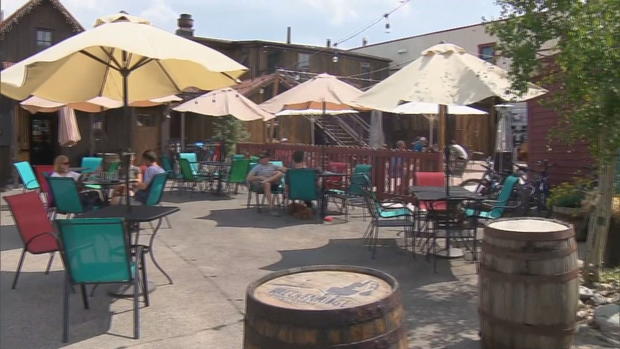CDC Study: Adults With COVID-19 About 'Twice As Likely' To Say They Have Dined At A Restaurant
(CNN) - Adults who tested positive for COVID-19 were approximately twice as likely to have reported dining at a restaurant in the 14 days before becoming ill than those who tested negative, according to a new study from the US Centers for Disease Control and Prevention.
"In addition to dining at a restaurant, case-patients were more likely to report going to a bar/coffee shop, but only when the analysis was restricted to participants without close contact with persons with known COVID-19 before illness onset," the researchers wrote.
The study, published on Sept. 10, included data on 314 adults who were tested for COVID-19 in July because they were experiencing symptoms; 154 tested positive and 160 tested negative. The tests were administered at 11 different health care facilities across 10 US states: California, Colorado, Maryland, Massachusetts, Minnesota, North Carolina, Ohio, Tennessee, Utah and Washington.
The researchers -- from the CDC and other institutions -- took a close look at how those patients responded to questions about wearing masks and various activities in the community, including whether they recently dined at a restaurant, hung out a bar or went to a gym, for instance.
Forty-two percent of the adults who tested positive, the data showed, reported having close contact with at least one person known to have COVID-19, compared with 14% of those who tested negative -- and most of the close contacts, 51%, were family members.
The researchers also found that 71% of the adults with COVID-19 and 74% of those who tested negative reported always using a face covering while in public.
There were no significant differences between those who tested positive versus negative when it came to shopping, gathering with fewer than 10 people in a home, going to an office, going to a gym, going to a salon, using public transportation or attending religious gatherings, according to the study.
However, people who tested positive, the data showed, were more likely to have reported dining at a restaurant in the two weeks before they started to feel sick.
The study comes with some limitations, including that more research is needed to determine whether similar findings would emerge among a larger group of patients, and the question assessing dining at a restaurant did not distinguish between indoor versus outdoor dining.
"Reports of exposures in restaurants have been linked to air circulation. Direction, ventilation, and intensity of airflow might affect virus transmission, even if social distancing measures and mask use are implemented according to current guidance," the researchers wrote.
"Masks cannot be effectively worn while eating and drinking, whereas shopping and numerous other indoor activities do not preclude mask use."
Taking precautions
The Association of Food and Drug Officials issued a response to the CDC study on Thursday.
The response noted some of the study's limitations, including that the 10 states in the report had greatly varying restrictions on restaurants, overall control measures varied greatly in those communities, and it was unclear whether people who said they went to restaurants and bars were in the community more frequently overall, increasing their risk of exposure to the coronavirus.
"Sound public health limitations in bars, taverns, and restaurants include limiting alcohol service to accompanying food orders, not allowing hours of operation to extend into the late nights, and limiting occupancy levels and table arrangements to those levels which allow for social distancing. Further, as always, pick-up and delivery remain very low-risk options to obtain food from our favorite bars, taverns, and restaurants," Steven Mandernach, executive director of AFDO, said in the association's statement.
"The hospitality industry has responded and evolved to continue to reduce the risk of transmission of COVID-19 to their customers," he said.
As states reopen, the CDC's guidelines for restaurants and bars list dining options from the lowest to the highest risk on the agency's website:
- Lowest risk: Food service limited to drive-through, delivery, takeout and curbside pickup.
- More risk: On-site dining limited to outdoor seating. Seating capacity reduced to allow tables to be spaced at least 6 feet apart.
- Even more risk: On-site dining with both indoor and outdoor seating. Seating capacity reduced to allow tables to be spaced at least 6 feet apart.
- Highest risk: On-site dining with both indoor and outdoor seating. Seating capacity not reduced and tables not spaced at least 6 feet apart.
By Jacqueline Howard
The-CNN-Wire
™ & © 2020 Cable News Network, Inc., a WarnerMedia Company. All rights reserved.




